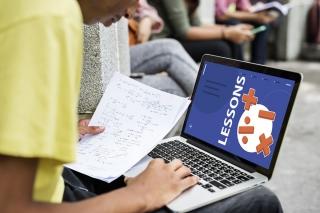You may be familiar with screencasts as video tutorials on YouTube that describe how to use a piece of technology, but they’ve also caught on in the classroom.
While screencasts should never be a replacement for actual teaching, they can be used to reinforce material in a step-by-step fashion.
Teachers can easily make their own screencasts or students can create them as resources for classmates.
First, let’s define a screencast. It is a video recording of every action appearing on a computer or tablet screen, usually accompanied by voiceover narration, and sometimes including captions or text. Most topics that are procedural work well for screencasts.
Making your own screencast allows you to address your students’ specific needs. Maybe a large number of students are struggling with a concept, but you need to move forward in the curriculum; with a screencast, those students could review the concept at any time. Screencasts are also a resource for students studying for an assessment.
If you want to try a flipped classroom model, students can watch screencasts at home and then come to class to work in small groups on projects related to the concept demonstrated on the screencast.
I like using student-created screencasts because it creates a collaborative classroom and takes pressure off the teacher. My English students created them to reinforce grammar; a colleague had her math students design screencasts demonstrating geometry properties.
How else could teachers use screencasts?
- To give instructions for using technology or software
- To solve math problems step-by-step
- To describe a multi-step project
- To review the most frequently missed answers on a test
- To convert digital presentations for later review
- To provide material parents can use to help with homework
- To conduct science experiments using digital resources
- To show how to access an online classroom or gradebook
- To give instructions for logging in and using digital textbooks
There are many services that provide easy and lowcost methods to make your own screencasts. Here are some recommended platforms:
Screencast-O-Matic is both an app and a desktop application that work in tandem with each other. The app is free and the basic level of service is also free; the deluxe level is $18 per year for educators.
If you have SMART Notebook software, you can create a screencast with the SMART Recorder. Here's a how-to guide.
For Windows users, PowerPoint 2016 has screencasting built into its software. And for Mac users, screencasts can be made with QuickTime Player.
Creating a screencast with a laptop or desktop is generally better for typing out instructions; with iPads and tablets, you can “draw,” so it lends itself more to handwriting. You should try to create a screencast in the same format your students will be using later so they can easily follow along.
Keep videos short — just a few minutes at a time is best. Rehearse or make a script for yourself before you get started. Most platforms allow you to pause while you are recording, and you can always rerecord if necessary.
Like anything new, using screencasts may be challenging at first, but you will become more adept as you create more of them.
